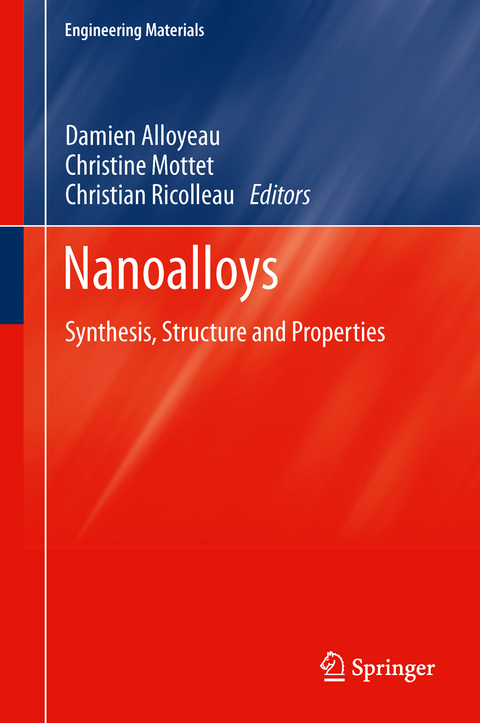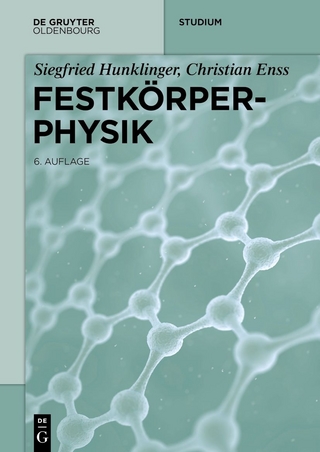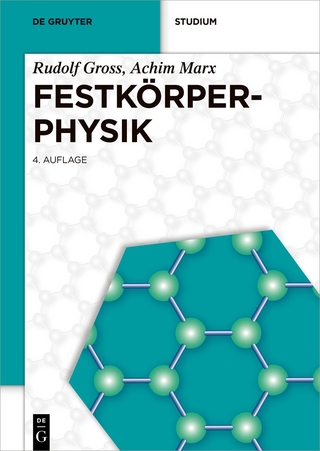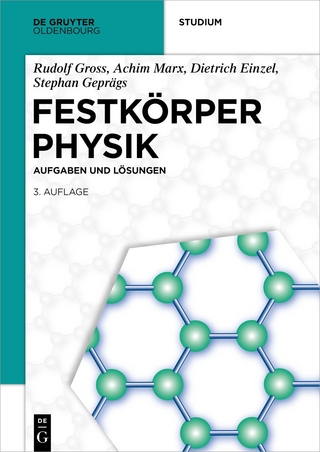
Nanoalloys
Springer London Ltd (Verlag)
978-1-4471-6146-2 (ISBN)
Bimetallic nanoparticles, also called nanoalloys, are at the heart of nanoscience because of their ability to tune together composition and size for specific purposes. By approaching both their physical and chemical properties, Nanoalloys: Synthesis, Structure & Properties provides a comprehensive reference to this research field in nanoscience by addressing the subject from both experimental and theoretical points of view, providing chapters across three main topics:
Growth and structural properties
Thermodynamics and electronic structure of nanoalloys
Magnetic, optic and catalytic properties
The growth and elaboration processes which are the necessary and crucial part of any experimental approach are detailed in the first chapter. Three chapters are focused on the widely used characterization techniques sensitive to both the structural arrangements and chemistry of nanoalloys. The electronic structure of nanoalloys is described as a guide of useful concepts and theoretical tools. Chapters covering thermodynamics begin with bulk alloys, going to nanoalloys via surfaces in order to describe chemical order/disorder, segregation and phase transitions in reduced dimension. Finally, the optical, magnetic and catalytic properties are discussed by focusing on nanoparticles formed with one element to track the modifications which occur when forming nanoalloys.
The range and detail of Nanoalloys: Synthesis, Structure & Properties makes it an ideal resource for postgraduates and researchers working in the field of nanoscience looking to expand and support their knowledge of nanoalloys.
Damien Alloyeau is working at the Paris Diderot University in the Materials and Quantum Phenomena laboratory. His research focuses on both the synthesis of innovative nanomaterials and the development of electron microscopy techniques dedicated to the study of nano-objects. After his PhD thesis focused on the thermodynamical properties of CoPt nanoparticles in Paris, he obtained a post-doctoral position at the National Center for Electron Microscopy in Berkeley (LBNL, USA) where he became a specialist in aberration-corrected high-resolution TEM. He entered the CNRS as a permanent researcher in 2010. Recently, he has applied electron tomography and quantitative high-resolution electron microscopy to study the effect of the shape of CoPt nanoparticles on their order-disorder phase transition. This work, recently published in Nature Materials, is an important step forward in determining the origin of size effects in magnetic alloys nanoparticles. Christine Mottet is a researcher of the department of Theory and Numerical Simulations of the Interdisciplinary Centre of Nanoscience in Marseille (France). After a thesis on metallic clusters and a post-doc at the University of Genova, Italy, in the group of the professor Ferrando on the growth of metallic surfaces, she enters the CNRS as researcher in the group of modelisation of Guy Tréglia in the Research Centre on Crystal Growth Mecanisms in Marseille. She works on the modelling by numerical simulations of the structure and dynamics of metallic nanoparticles. She has been member of the Council of the French Physical Society and of the National Council of the Universities. Since 2008, she has been co-director, with Christian Ricolleau, of a CNRS research network composed of 30 French laboratories working on nanoalloys. Christian Ricolleau is the leader of the Advanced Transmission Electron Microscopy and Nanostructures group at the Material and Quantum Phenomena laboratory. He is a physicist inmaterials science with much experience in electron microscopy (mainly in high resolution, diffraction and energy filtered TEM techniques). He has extensive knowledge in the growth of metallic nanoparticles on oxide substrates since it has been, in addition to the new development in advanced TEM techniques, his main field of research since 1999. After his PhD thesis on the wetting phenomenon of antiphase boundaries in binary alloys, he got the position of assistant professor in Mineralogy Crystallography Lab in Paris Diderot University. In 2000, he participated in the creation of the Materials and Quantum Phenomena laboratory and, in 2004, he received the position of professor at the Paris Diderot University. Since 2008, he has been the director of the Nanoalloys Research Network of the CNRS. From May 2010, Christine Mottet and Christian Ricolleau are French members of the Management Committee of the COST Action "Nanoalloys as advanced materials: from structure to properties and applications". Contributing Authors: Chapter 1. Christophe Petit and Vincent Repain Chapter 2. Claude R. Henry and Clemens Barth Chapter 3. Pascal Andreazza Chapter 4. Damien Alloyeau Chapter 5. G. Tréglia, C. Goyhenex, C. Mottet, B. Legrand and F. Ducastelle Chapter 6. François Ducastelle Chapter 7. J. Creuze, F. Berthier and B. Legrand Chapter 8. Riccardo Ferrando Chapter 9. V. Pierron-Bohnes, A. Tamion, F. Tournus and V. Dupuis Chapter 10. E. Cottancin, N. DelFatti and V. Halté Chapter 11. Laurent Piccolo Chapter 2. Claude R. Henry and Clemens Barth Chapter 3. Pascal Andreazza Chapter 4. Damien Alloyeau Chapter 5. G. Tréglia, C. Goyhenex, C. Mottet, B. Legrand and F. Ducastelle Chapter 6. François Ducastelle Chapter 7. J. Creuze, F. Berthier and B. Legrand Chapter 8. Riccardo Ferrando Chapter 9. V. Pierron-Bohnes, A. Tamion, F. Tournus and V. Dupuis Chapter 10. E. Cottancin, N. Del Fatti and V. Halté Chapter 11. Laurent Piccolo Chapter 6. François Ducastelle Chapter 7. J. Creuze, F. Berthier and B. Legrand Chapter 8. Riccardo Ferrando Chapter 9. V. Pierron-Bohnes, A. Tamion, F. Tournus and V. Dupuis Chapter 10. E. Cottancin, N. Del Fatti and V. Halté Chapter 11. Laurent Piccolo
1.Nucleation and growth of bimetallic nanoparticles.- 2.Bimetallic nanoparticles, grown under UHV on insulators, studied by scanning probe microscopy.- 3.Probing nanoalloy structure and morphology by X-ray scattering methods.- 4.Transmission electron microscopy: a multifunctional tool for the atomic-scale characterization of nanoalloys.- 5.Electronic structure of nanoalloys: a guide of useful concepts and tools.- 6.Chemical order and disorder in alloys.- 7.Segregation and phase transitions in reduced dimension: from bulk to clusters via surfaces.- 8.Computational methods for predicting the structures of nanoalloys.- 9.Magnetism of low-dimension alloys.- 10.Optical, structural and magneto-optical properties of metal clusters and nanoparticles.- 11.Surface studies of catalysis by metals: nanosize and alloying effects.
| Erscheint lt. Verlag | 9.8.2014 |
|---|---|
| Reihe/Serie | Engineering Materials |
| Zusatzinfo | VIII, 412 p. |
| Verlagsort | England |
| Sprache | englisch |
| Maße | 155 x 235 mm |
| Themenwelt | Naturwissenschaften ► Physik / Astronomie ► Festkörperphysik |
| Technik ► Elektrotechnik / Energietechnik | |
| Schlagworte | Bimetallic Nanoparticles • Catalysis Properties • Magnetic properties • optical properties • Structural properties |
| ISBN-10 | 1-4471-6146-7 / 1447161467 |
| ISBN-13 | 978-1-4471-6146-2 / 9781447161462 |
| Zustand | Neuware |
| Haben Sie eine Frage zum Produkt? |
aus dem Bereich


